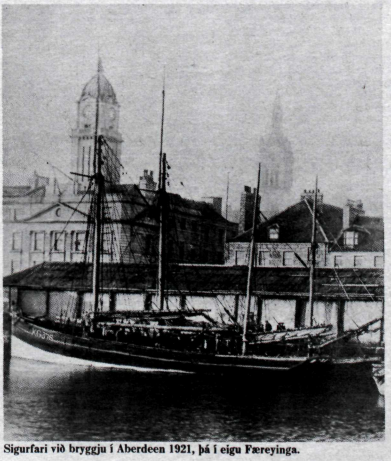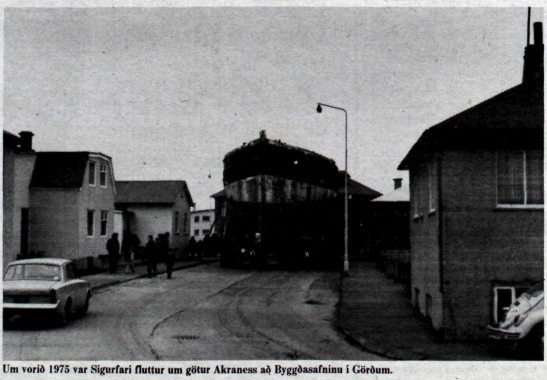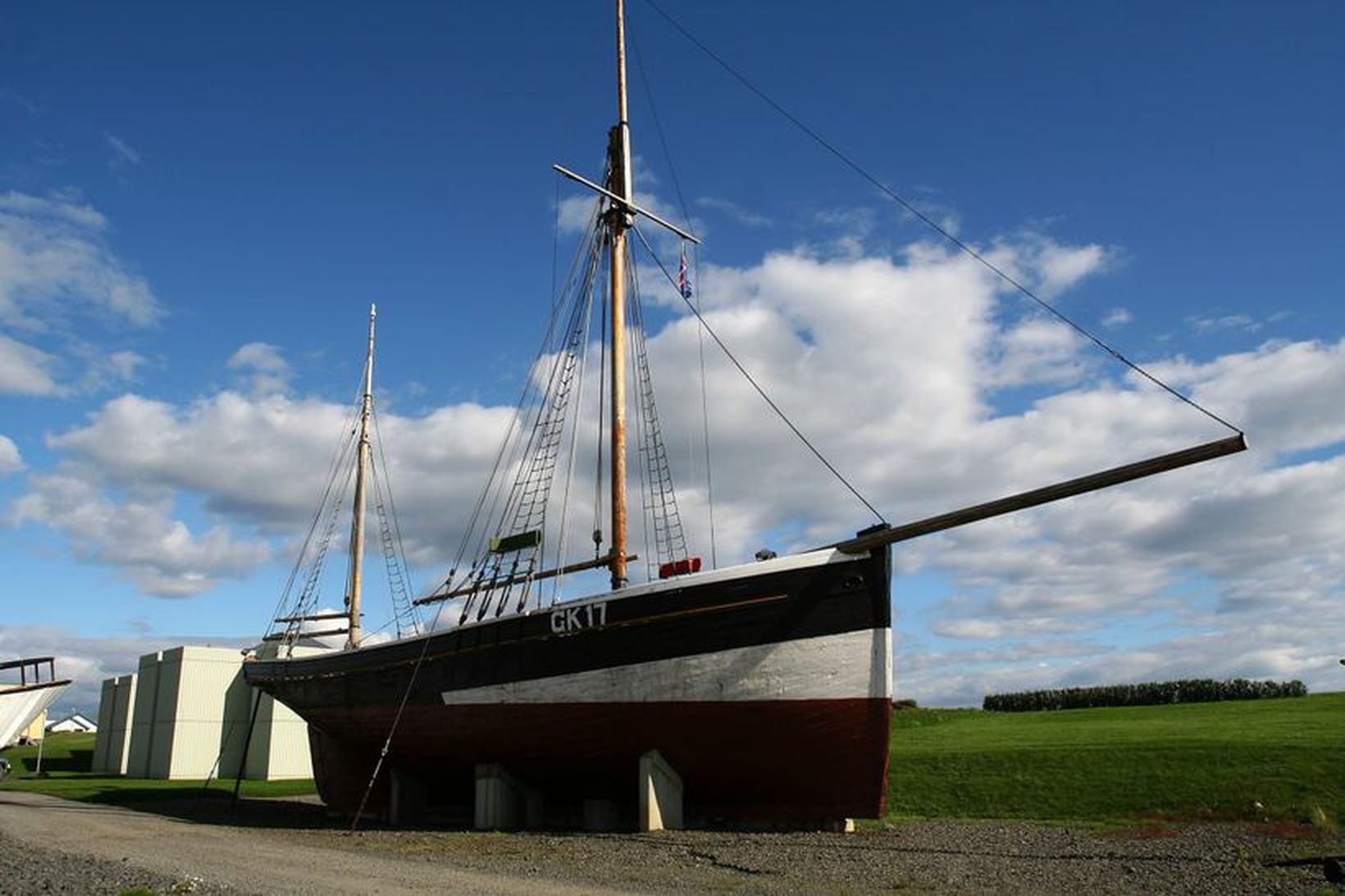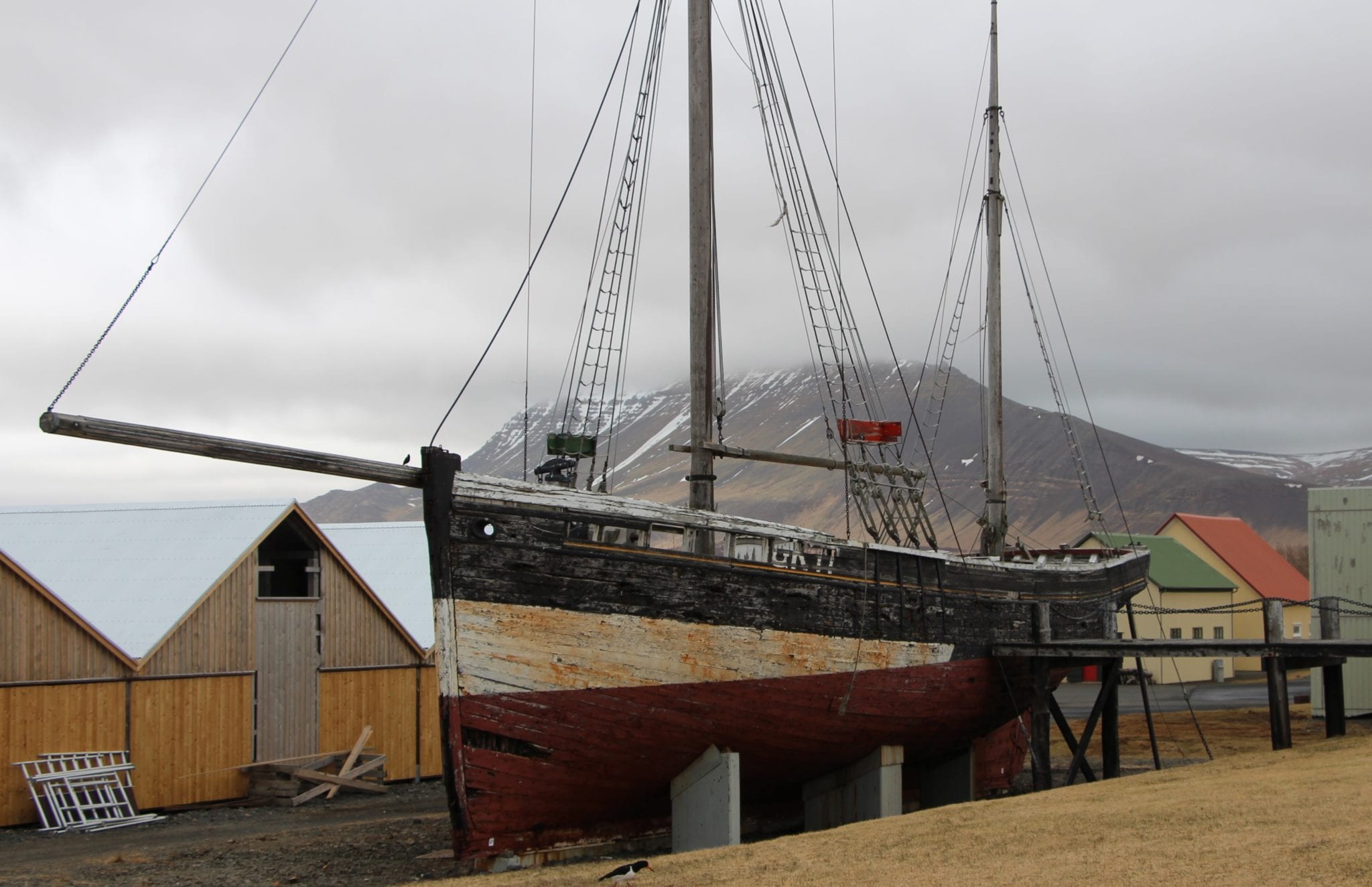Parts of Sigurfari's story
Source: (Morgunblaðið, 239. tölublað - II (27.10.1982), Bls. 4)

1885: This year a 85.10 tn. cutter is built at John Wray & Sons' shipyard in the town of Burtonon-Stather (near Hull) in England. The ship is then probably immediately given the name "Bacchante", and will have been used for trawling from Hull for the next 12 years.
1897: Jón Jónsson, captain and shipowner in Melshús in Seltjarnarnes, goes to Hull to buy cutters. On the 16th of July he completes the purchase of "Bacchante" from the yacht owner George William Cook and pays for the ship £ 325. On September 17 of the same year, Jón sells the cutter to Magnús Th.S. Blöndahl, carpenter in Hafnarfjörður, with rafting and riding. Magnús built the ship for a long time and gave it the name "Guðrún Blöndahl", but that was his wife's name.
1898: Magnus Th.S. Blöndahl sells the ship on the 28th of September to Pétur Sigurðsson, a fisherman in Hrólfsskáli in Seltjarnarnes, and Gunnstein Einarsson, a skipper in Skildinganes. Pétur owned 2/3 of the ship, and Gunnsteinn 1/3. They gave the cutter the name "Sigurfari", but that name had been used for a long time for open boats from Hrólfsskáli. The name change took place in May 1900. Pétur and Gunnsteinn operated Sigurfari until 1908 and Gunnsteinn was captain the whole time. Sigurfari carried then the identification letters GK17.
Seltjarnarnes, and Gunnstein Einarsson, a skipper in Skildinganes. Pétur owned 2/3 of the ship, and Gunnsteinn 1/3. They gave the cutter the name "Sigurfari", but that name had been used for a long time for open boats from Hrólfsskáli. The name change took place in May 1900. Pétur and Gunnsteinn operated Sigurfari until 1908 and Gunnsteinn was captain the whole time. Sigurfari carried then the identification letters GK17.
1908: On January 30 that year, Pétur Sigurðsson and Gunnsteinn Einarsson Sigurfari sell the trading and shipping company H.P. Duus in Reykjavík. Duus was for many years the largest operator of deck vessels in Iceland. Sigurfari was operated out of Reykjavík for the next 12 years and during that time bore the identification letters RE 136. There were many captains on Sigurfari during this period, but the last of them was Jóhannes Guðmundsson from Hamar in Barðaströnd, a sailor well known for his fishing skils. Sigurfari was considered a good seagoing vessel, fortunate and for many years one of the highest fishing deck vessels in the Faxaflói area. Only one death is known to have happended in connection to Sigurfari, but it was April 21, 1909, when a wave hot the ship when it was located near Selvogur, and the captain Einar Einarsson was thrown overboard and drowned.
1919: Then in the autumn, Duus sold Sigurfari to Sörin Sörensen in Viðareiði in the Faroe Islands. In November, 6 Faroese came to Iceland to pick up the ship, but when it was finally ready to go in mid-January, four of them had returned home. In their place, 4 icelanders were hired. The ship left the harbor on January 19, 1920. The captain was Sigmund Mikkelsen and the coxswain was Ziska Jacobsen. Shortly after the ship left port, there was a catastrophic storm, which lasted for a month. Sigurfari was chased across the sea between Iceland and the Faroe Islands for weeks. The big boom broke, the sail equipment was damaged and supplies and firewood ran out. To save themselves from starvation, the crew made use of the cargo, which was e.g. meat, flour and raisins. For cooking, they burned the boom and cladding inside the hatch. On the 4th of February, Captain Sigmund had little hope that they would reach land alive, so he threw out a bottle which included a message announcing their misfortunes and another for his fiancée in the Faroe Islands. Sigurfari was thought to have perished and an announcement saying so appeared in Morgunblaðið on 17 February. Exactly 10 days later, Sigurfar reached Seyðisfjörður. The Spanish flu raged in the town, but the crew still received the best reception. After a 12-day stay and repair of the ship, they went to sea again, and now 5 Norwegians had joined the group. The trip to the Faroe Islands took only 5 days and on the 16th of March Sigurfari anchored in Klakksvík. However, due to the risk of contracting the Spanish flu, the crew had to wait another 10 days on board the ship. It had been just over 2 months since Sigurfari left the port of Reykjavík. The bottle with Sigmund's message drifted to the shores of Skipsfjord on the island of Vannoy in Norway and was found in August of the same year.
Sigurfari was chased across the sea between Iceland and the Faroe Islands for weeks. The big boom broke, the sail equipment was damaged and supplies and firewood ran out. To save themselves from starvation, the crew made use of the cargo, which was e.g. meat, flour and raisins. For cooking, they burned the boom and cladding inside the hatch. On the 4th of February, Captain Sigmund had little hope that they would reach land alive, so he threw out a bottle which included a message announcing their misfortunes and another for his fiancée in the Faroe Islands. Sigurfari was thought to have perished and an announcement saying so appeared in Morgunblaðið on 17 February. Exactly 10 days later, Sigurfar reached Seyðisfjörður. The Spanish flu raged in the town, but the crew still received the best reception. After a 12-day stay and repair of the ship, they went to sea again, and now 5 Norwegians had joined the group. The trip to the Faroe Islands took only 5 days and on the 16th of March Sigurfari anchored in Klakksvík. However, due to the risk of contracting the Spanish flu, the crew had to wait another 10 days on board the ship. It had been just over 2 months since Sigurfari left the port of Reykjavík. The bottle with Sigmund's message drifted to the shores of Skipsfjord on the island of Vannoy in Norway and was found in August of the same year.
1921 - 1971: Sigurfari KG 378 was operated out of Viðareiði for one year, but then for exactly 50 years from Klakksvík. At that time it was owned by several parties, but for the longest time and lastly by Pf. Joensen & Olsen. At that time, various changes and improvements were made to the ship, the deck and parts of the load were renewed, an engine was installed in the boat in 1929, a wheelhouse, a baiting shed, etc. Sigurfari was last operated in the summer of 1970 and Urbanus Olsen in Klakksvík was the captain for most of the last years.
for exactly 50 years from Klakksvík. At that time it was owned by several parties, but for the longest time and lastly by Pf. Joensen & Olsen. At that time, various changes and improvements were made to the ship, the deck and parts of the load were renewed, an engine was installed in the boat in 1929, a wheelhouse, a baiting shed, etc. Sigurfari was last operated in the summer of 1970 and Urbanus Olsen in Klakksvík was the captain for most of the last years.
1974: Sigurfari is bought to Iceland on the initiative of Jón M. Guðjónsson, a priest in Akranes. It now stands on concrete foundations the Akranes folks mueaum.